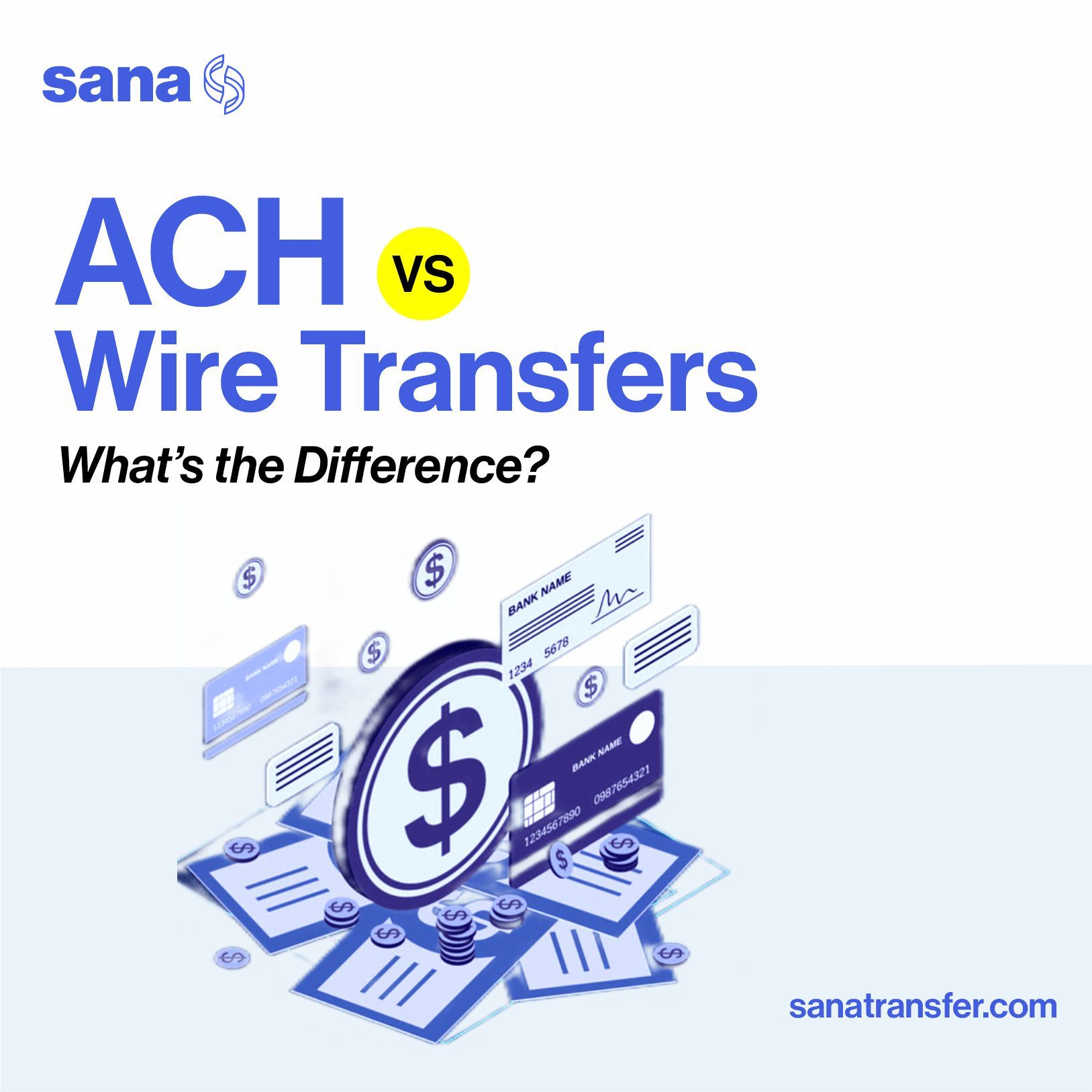ACH vs. Wire Transfers: What’s the Difference?
In this article, we discussed ACH and wire transfers, highlighting their mode of operation and differences.

The advent of e-commerce has made electronic payments become very popular. Essentially, more people are choosing to shop and pay for goods and services online because it has become easy, more convenient, and cheap. It is also common to see people send money to others online due to convenience.
Out of all the ways to send money online, ACH transfers and Wire transfers are fast becoming the two easiest methods. So, what’s the major difference between these two methods and why are they popular? Speed and cost are two major things that differentiate them. Let’s go into more detail in this article.
What Are ACH Transfers?
An ACH payment involves transferring funds between two or more banks or financial institutions via an electronic network. Usually, this kind of transfer is processed through the automated clearing house network. You can use ACH transfers to execute different kinds of transactions, including:
- Paycheck direct deposit
- Direct deposit of government remunerations or tax refunds
- One-time bill payments
- Recurring debits (such as automatic bill payments)
- Healthcare claim payments
- International payments
- Person-to-person (P2P) payments
- Business-to-business (B2B) payments
How Do ACH Transfers Work?
There are several moving parts of an automated clearing house (ACH) transaction. First, the origin bank has to initiate an ACH transfer, then this transfer will be grouped together with so many other ACH transfers. The group of ACH transactions will then be processed via the automated clearing house. Once the transactions are processed for one day, they will be sent in groups to the receiving (recipient) bank. The receiving bank will then debits or credit the pertinent bank accounts accordingly.
We’ve listed out some essential terminologies that pertain to the processing of ACH transfers:
- Originator: This is the person that authorizes the ACH transfer or payment to someone else.
- Originating depository financial institution (ODFI): This is the originator’s bank
- ACH operator: The automated clearing house that helps to process the transaction
- Receiver: The person that receives an ACH transaction. Once the transfer gets to this person, it is completed
- Receiving depository financial institution (RDFI): The receiver’s bank
What Are Wire Transfers?
A wire transfer is a kind of transaction that’s instigated via a bank and authorizes the transfer of one from one bank account to another. If both banks are located in Canada, it is known as a domestic wire transfer. However, if one bank is located outside Canada, it is called either an international (global) wire transfer or a remittance transaction.
People widely use wire transfers when it’s crucial to send huge amounts of funds quickly. For instance, if you want to buy a home, they may ask you to transfer your down payment money via wire transfer. Also, if you want to send money to someone living in Canada or abroad, you can use wire transfers.
If you need to send funds abroad, the SanaTransfer mobile app is the best way to execute easy, cheap, and reliable wire transfers abroad. You can also track down your payment until it gets to the recipient via the app.
Recommended - What is an EFT Payment?
How Do Wire Transfers Work?
Wire transfers permit banks and financial institutions to communicate effectively with one another to facilitate the movement of money between bank accounts. The person sending the transfer has to provide the bank with certain information, including:
- The amount of money to be transferred
- The account number that should be used to execute the transfer
- The name, address, as well as the phone number of the intended recipient
- The routing number of the intended recipient’s bank (or the SWIFT code if it is an international wire transfer)
- The recipient’s bank account number
Once the sender’s bank gets this information, it can start processing the wire transfer and the amount of money to be sent will be deducted from the sender’s bank account. This specific amount will then be credited to the receiver’s account. Also, the sender of the wire transfer has to pay a specific fee for the transaction. The receiver of the transfer may also be mandated to pay a fee. The amount charged as the transfer fee usually varies by bank, however, global wire transfers incur higher fees than local/domestic transfers.
ACH vs. Wire Transfers: What Are The Differences Between ACH and Wire Transfers?
Although ACH and wire transfers are both electronic payments, there are some key differences between them. Consider these options before using any of them:
1. Availability
ACH transfers are only limited to domestic transactions. Basically, this means that you can not send funds abroad via ACH transfers. However, this is not the same for wire transfers. You can send both domestic wire transfers and international (global) wire transfers.
2. Transfer limits
The daily transfer limits for both ACH and Wire transfers differ. Wire transfers allow you to send larger funds, unlike ACH transactions which are quite restricted. Check with your financial institution to confirm your limit.
3. Security
Although both types of transfers are secure, ACH transfers are more secure than wire transfers since they are backed by Federal law. Also, ACH transactions can be stopped if an error is noticed, however, this is not the same for Wire transfers. Wire transfers get completed more quickly and can not be reversed if your recipient has received the money.
4. Processing times
ACH payments generally take about one or more working days to get processed and completed. However, most wire transfers get processed on the same working day. This means that wire transfers get completed faster than ACH transfers.
5. Posting times
With wire transfers, recipients can access the money immediately it hits their account. However, ACH transfers are a bit different. First, the money will appear as "pending" status and you won’t be able to access it until the ACH system is cleared. This can take about three business days.
5. Fees
Most ACH payments are free or very cheap, however, your bank may charge you a fee for any expedited bill service or transferring funds to outside banks. As for wire transfers, the fees can be expensive, depending on the bank/transfer platform you use. Use SanaTransfer platform to send money overseas at affordable rates.
6. Reversals
Another major advantage of using ACH transfers is that you can request payment reversal if you notice an error. On the other hand, wire transfers don't give you the option of reversing any payment you make. Wire transactions are permanent once initiated so make sure you don't make errors.
Closing Thoughts
The better option between ACH and wire transfers depends on the situation. If you’re executing any bill payment or you want to schedule direct deposits for government benefits or tax refunds, these transactions will have to be processed through the ACH network.
However, if you want to send somebody a huge amount of cash (locally or internationally) and it is urgent, you can decide to use a wire transfer. Remember, ACH transfers are slow and should not be used during emergency situations.
Join 500+ users across Canada in sending money back to family and loved ones using the SanaTransfer app.
Visit SanaTransfer.com now to get started or download the app on Android or iOS.
